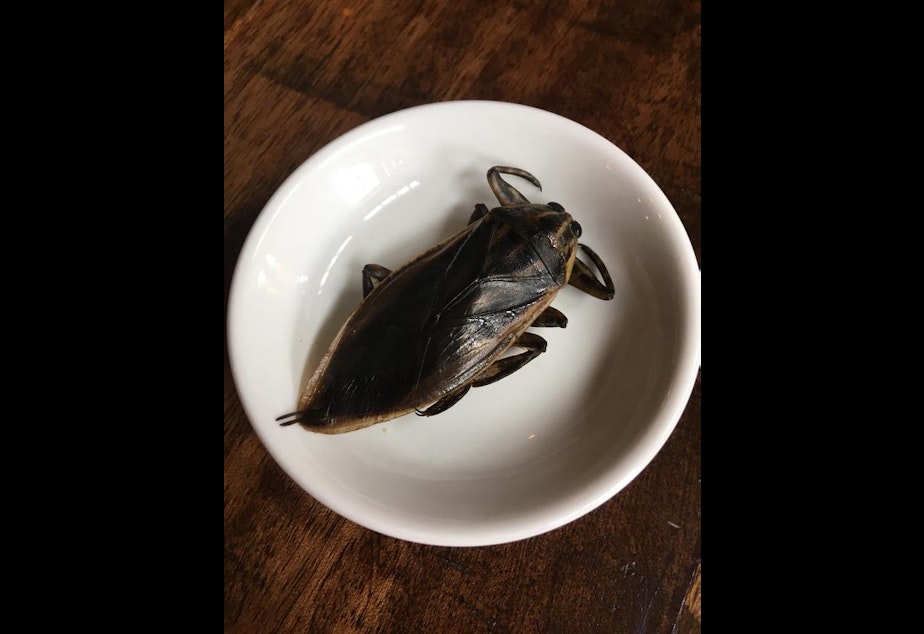We ate bugs at Seattle restaurants. This one tasted like apple Jolly Rancher

You can order water bugs the size of a Post-It note at Nue, a trendy restaurant on Capitol Hill. They’re full-bodied, winged, and you have to suck the meat from their abdomens.
Nearby at Poquitos, an upscale Mexican restaurant, are spicy chapulines, or grasshoppers, that taste vaguely of flour.
And down the hill, about once a year, The Carlile Room has snails on the menu. These are fancy snails, $76 for 8 ounces, and they are raised lovingly at a modest escargotiere on the Olympic Peninsula run by Ric Brewer.
Top read: This little yellow house tells the story of Seattle
"We're eating bugs every day whether we know it or not — might as well do it purposefully," Brewer said. "It's growing but not quite a huge industry yet. It will be as traditional protein prices go up."
Some Seattle chefs are experimenting with bugs – full of protein, low in fat, they say – at restaurants across Seattle. Some of these aren’t too surprising (grasshoppers), but others ask more of their diners, like the water bug, which looks like a cockroach and tastes like an apple Jolly Rancher dipped in salt.
"I was in a market outside Chiang Mai, Thailand, about 20 years ago and I saw water beetles and thought, 'I gotta try one,'" Nue’s owner, Chris Cvetkovich, said. "I fell in love with the flavor."
"I've looked into crickets, but they don't have any distinctive flavor. They're a vehicle for whatever seasoning you put on them. They're not interesting to me.
Nue keeps this dish, a sushi-grade water bug, off menu. Cvetkovich said he doesn’t want his restaurant to be the known as the “bug restaurant,” but he sells quite a few of these every weekend – some patrons even ask for seconds and thirds. (Nue doesn't shy away from putting pig tails and fertilized duck eggs on the menu, however.)
To eat the water bug, you remove the wings and then pry open the abdomen and head to suck the meat out. The acute apple flavor is male water bug pheromones, which is used as a flavor in various sauces. They're harvested in rice paddies where they live, lured with lights in the middle of the night.
For chapulines, we headed to Paquitos, where they are a happy hour item. You get a sticker if you eat two; our server told us one lady ate 17 orders one night. Ruby de Luna meets her lunch.
Cvetkovich is right about eating chapulines: the grasshopper flavor disappears beneath the heat from the toasted chilies, salt and lime. They pair nicely with beer.
At The Carlile Room downtown, Chef Dezi Bonow goes for local ingredients, including snails from Quilcene. These are not your garden-variety snails, however. “I wouldn’t go out in my backyard and start picking up snails and eating them, because you don’t know what they’ve been eating. They will eat anything,” Brewer said. If you need a ramp up to eating bugs, C
Brewer raises his snails on organic greens. When they are ready for harvest, he adds oats and corn to the mix (it takes a year for them to reach their peak), but they still must go through a purging process.
“It’s a whole-bodied animal, so you’re eating everything on them and in them. It takes several days of prep work before you can get them ready to eat." In other words, the snails must fast ahead of the harvest to clear out their digestive tract.

